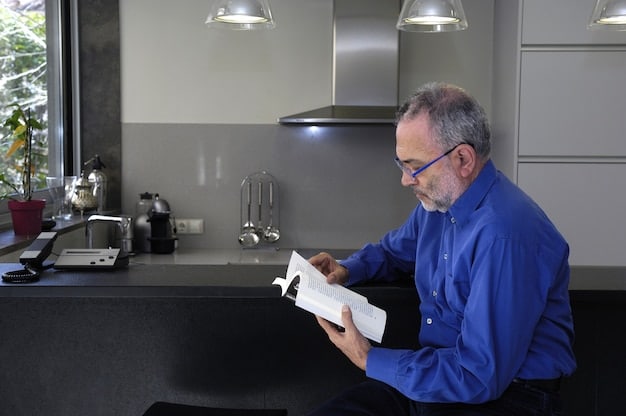New Rules for Section 8 in 2025: What You Need to Know

The Federal Housing Choice Voucher Program (Section 8) is set to undergo significant changes in 2025, impacting eligibility, voucher usage, and landlord participation, aiming to enhance accessibility and fairness in subsidized housing.
As we approach 2025, significant changes are on the horizon for the Federal Housing Choice Voucher Program, commonly known as Section 8. Understanding these new rules for the Federal Housing Choice Voucher Program (Section 8) in 2025 is crucial for both current recipients and prospective applicants, as well as landlords participating in the program.
What are the upcoming changes to Section 8 in 2025?
The Section 8 program, a cornerstone of federal housing assistance, aims to provide affordable housing options for low-income families, the elderly, and individuals with disabilities. As we look ahead to 2025, several key changes are expected to be implemented, impacting various aspects of the program.
These changes are designed to address existing challenges and improve the effectiveness of the program in meeting the housing needs of vulnerable populations. Let’s delve into the specifics of what these changes entail and what they mean for those involved.
Increased Focus on Housing Quality Standards
One of the most significant changes expected is a renewed emphasis on Housing Quality Standards (HQS). HQS are the minimum standards that a housing unit must meet to be eligible for participation in the Section 8 program.
- Enhanced Inspections: More frequent and thorough inspections will be conducted to ensure properties meet HQS.
- Stricter Enforcement: Landlords who fail to maintain their properties to the required standards may face penalties, including suspension from the program.
- Tenant Empowerment: Tenants will be provided with better resources to report HQS violations and advocate for necessary repairs.
This focus on HQS aims to ensure that individuals and families utilizing Section 8 vouchers have access to safe and habitable housing.

The shift towards increased housing quality standards and stricter enforcement will ensure better and safer living conditions for Section 8 participants.
Eligibility Criteria Updates
The Section 8 program’s eligibility criteria are also expected to undergo revisions in 2025. These updates aim to refine the targeting of assistance to those most in need.
These changes may involve modifications to income thresholds, asset limitations, and other factors that determine an applicant’s eligibility for the program. Understanding these updated criteria is essential for both current voucher holders and potential applicants.
Changes to Income Thresholds
Income thresholds, which determine the maximum income a household can have to qualify for Section 8, may be adjusted to reflect changes in the cost of living and economic conditions.
- Regional Adjustments: Income thresholds may be adjusted based on the specific cost of living in different regions of the country.
- Increased Flexibility: Efforts may be made to provide more flexibility in income calculations to account for factors such as childcare expenses and medical costs.
- Targeted Assistance: The program may prioritize assistance to households with the lowest incomes and those facing the greatest housing challenges.
Adjusting income thresholds ensures that the program remains responsive to the economic realities faced by low-income individuals and families.
Changes to the eligibility criteria will help ensure that support goes those who need it most, and that the program remains in compliance with fluctuating economic climates.
Voucher Usage and Portability Enhancements
In 2025, the Section 8 program is expected to introduce enhancements to voucher usage and portability, making it easier for voucher holders to find and maintain suitable housing.
These enhancements may include streamlining the process for voucher holders to move to different areas, increasing the amount of time voucher holders have to find housing, and providing additional support services to help voucher holders succeed.
Streamlined Portability Procedures
Portability, the ability for voucher holders to move to a different jurisdiction while maintaining their voucher, is a key feature of the Section 8 program. Efforts are underway to streamline the portability process and reduce barriers to mobility.
- Interagency Coordination: Improved coordination between housing agencies in different jurisdictions will help facilitate smoother transfers.
- Centralized Information: A centralized database or online portal may be established to provide voucher holders with information about available housing in different areas.
- Reduced Paperwork: Steps may be taken to reduce the amount of paperwork and administrative burden associated with portability.

Streamlining portability procedures will enable voucher holders to access a wider range of housing opportunities and move to areas with better job prospects and educational resources.
Easier voucher usage and enhanced portability will give families mobility and increase opportunity when securing housing that fits their needs and situations.
Landlord Participation Incentives
Attracting and retaining landlords is essential for the success of the Section 8 program. In 2025, efforts are expected to focus on providing incentives to encourage more landlords to participate.
The hope is that by increasing landlord participation the voucher-holders are able to find somewhere that accepts the voucher and is up to code.
Financial Incentives for Landlords
Financial incentives can play a significant role in attracting landlords to the Section 8 program. These incentives may include:
- Sign-On Bonuses: Offering sign-on bonuses to landlords who agree to rent to voucher holders.
- Vacancy Payments: Providing payments to landlords to cover periods when a unit is vacant between tenants.
- Damage Mitigation Funds: Establishing funds to help landlords cover the cost of damages caused by voucher holders.
By providing financial incentives, the Section 8 program can make it more attractive for landlords to participate and increase the availability of affordable housing options for voucher holders.
By incentivizing landlords, the Section 8 program can secure affordable housing option and simultaneously offer revenue to rental property owners.
Technological Upgrades and Online Accessibility
As technology continues to evolve, the Section 8 program is expected to embrace technological upgrades to improve efficiency and accessibility. The digital world has transformed numerous processes, so government agencies are looking to find similar efficiencies.
These upgrades may include the implementation of online portals for applicants and landlords, electronic document management systems, and data analytics tools to track program performance and identify areas for improvement.
Online Portals for Applicants and Landlords
Online portals can streamline the application process for applicants and simplify administrative tasks for landlords.
Providing all parties with online accessibility is essential to the Section 8 program given the growing prevalence of all-digital experiences across all fields.
- Online Applications: Allowing applicants to submit their applications online, track their status, and receive notifications electronically.
- Landlord Self-Service: Providing landlords with online tools to manage their properties, submit required documentation, and communicate with housing agencies.
- Data Transparency: Making program data publicly available online to increase transparency and accountability.
Technological upgrades can make the Section 8 program more user-friendly and efficient, benefiting both applicants and landlords.
Offering online applications, self-service options, and data transperancy will make the Section 8 program more efficient and reliable for end users.
Community Engagement and Education
Effective community engagement and education are essential for ensuring the success of the Section 8 program. As the program evolves, efforts are expected to focus on raising awareness of the program and providing education and outreach to both voucher holders and the broader community.
Education empowers individuals to get assistance from all of the programs the government offers without bias.
Public Awareness Campaigns
Public awareness campaigns can help increase understanding of the Section 8 program and dispel misconceptions.
- Informational Workshops: Conducting workshops to educate potential applicants about the program and how to apply.
- Community Partnerships: Collaborating with local organizations and community leaders to reach underserved populations.
- Multilingual Resources: Providing resources in multiple languages to ensure that language barriers do not prevent individuals from accessing the program.
Community engagement and education can help break down barriers to participation and ensure that all eligible individuals have the opportunity to benefit from the Section 8 program.
Providing the community with public awareness campaigns is a tool to ensure that all eligible individuals are aware of the Section 8 program.
| Key Point | Brief Description |
|---|---|
| 🏠 Housing Quality Standards | More frequent inspections and stricter enforcement of housing standards. |
| 💰 Income Thresholds | Possible adjustments based on cost of living and financial situations. |
| 🗺️ Voucher Portability | Easing moving processes/transferring locations. |
| 💻 Online Accessibility | Upgrades to applications and documents available to applicants and landlords. |
Frequently Asked Questions
▼
Section 8, or the Housing Choice Voucher Program, helps low-income families, the elderly, and people with disabilities afford housing in the private market. It’s funded by the U.S. Department of Housing and Urban Development (HUD).
▼
Eligibility depends on income, family size, and citizenship status. Typically, income must be below 50% of the median for the county or metropolitan area. Local preferences may also apply.
▼
Applications are submitted to local Public Housing Agencies (PHAs). Waiting lists are common, and it may take time to receive a voucher. Check your local PHA’s website for details.
▼
Vouchers are typically used within the jurisdiction of the issuing PHA. However, the portability provision allows you to move to another area, provided you follow the PHA’s procedures.
▼
HQS are the minimum standards a property must meet to be approved for Section 8. They cover habitability, safety, and sanitation. Properties are inspected to ensure they meet these standards.
Conclusion
As we approach 2025, understanding the new rules for the Federal Housing Choice Voucher Program (Section 8) is essential for those who are either participating or are hoping to participate in the system. These changes aim to improve the program’s effectiveness, enhance housing quality, and promote greater accessibility. By staying informed and engaging with local housing agencies, individuals and families can navigate these changes and access the affordable housing resources they need.





